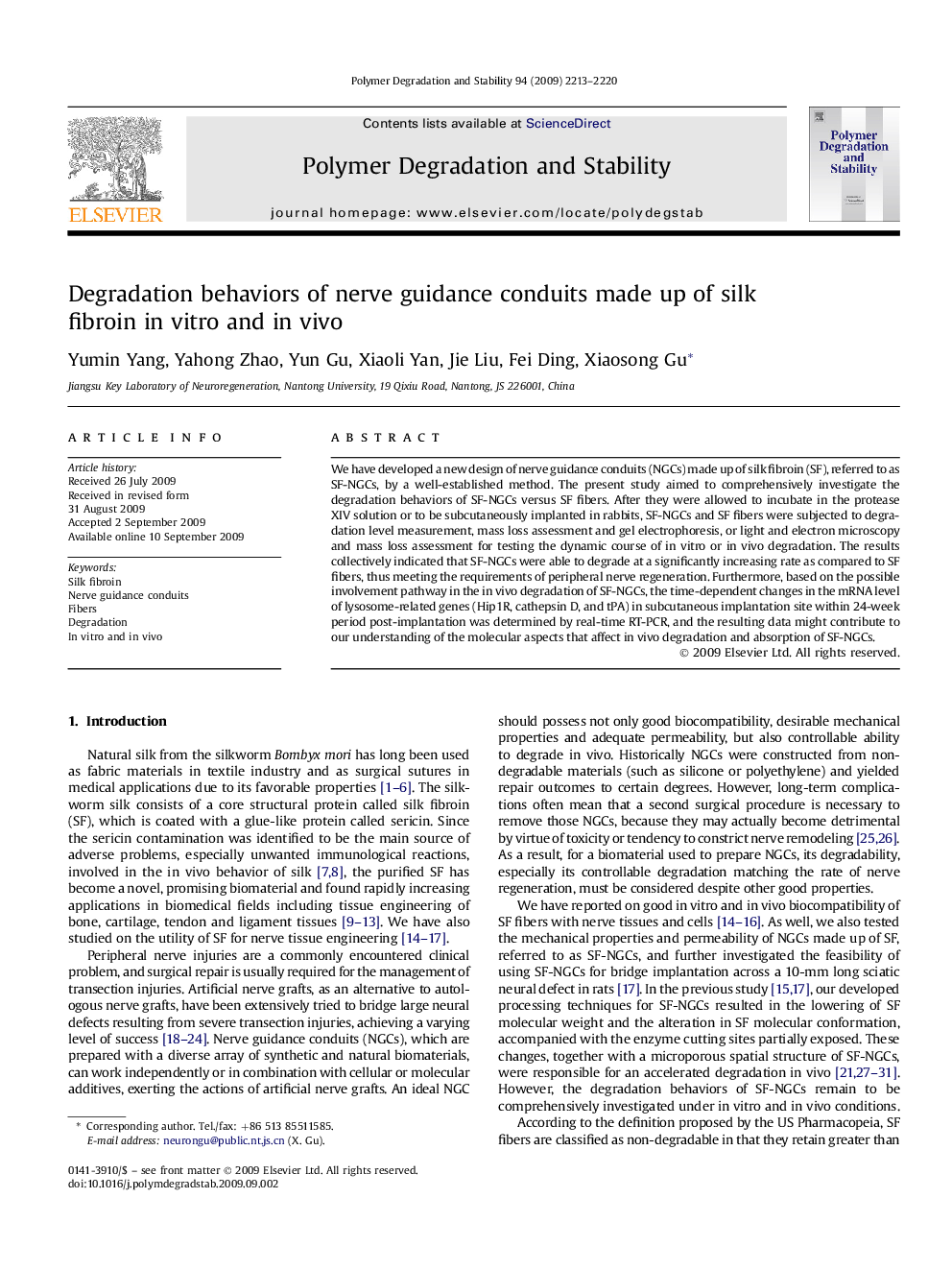| Article ID | Journal | Published Year | Pages | File Type |
|---|---|---|---|---|
| 5204322 | Polymer Degradation and Stability | 2009 | 8 Pages |
Abstract
We have developed a new design of nerve guidance conduits (NGCs) made up of silk fibroin (SF), referred to as SF-NGCs, by a well-established method. The present study aimed to comprehensively investigate the degradation behaviors of SF-NGCs versus SF fibers. After they were allowed to incubate in the protease XIVÂ solution or to be subcutaneously implanted in rabbits, SF-NGCs and SF fibers were subjected to degradation level measurement, mass loss assessment and gel electrophoresis, or light and electron microscopy and mass loss assessment for testing the dynamic course of in vitro or in vivo degradation. The results collectively indicated that SF-NGCs were able to degrade at a significantly increasing rate as compared to SF fibers, thus meeting the requirements of peripheral nerve regeneration. Furthermore, based on the possible involvement pathway in the in vivo degradation of SF-NGCs, the time-dependent changes in the mRNA level of lysosome-related genes (Hip1R, cathepsin D, and tPA) in subcutaneous implantation site within 24-week period post-implantation was determined by real-time RT-PCR, and the resulting data might contribute to our understanding of the molecular aspects that affect in vivo degradation and absorption of SF-NGCs.
Related Topics
Physical Sciences and Engineering
Chemistry
Organic Chemistry
Authors
Yumin Yang, Yahong Zhao, Yun Gu, Xiaoli Yan, Jie Liu, Fei Ding, Xiaosong Gu,
